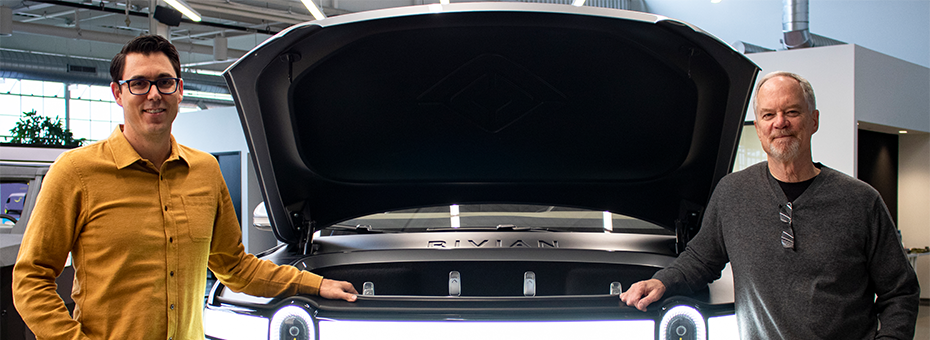If you do not yet know the company called Rivian you will undoubtedly know it very soon. In 2019 Rivian made waves in the auto industry by announcing two “electric adventure vehicles”: the R1T, an electric pickup truck, and the R1S, an electric SUV. Both vehicles are expected to launch in the United States later this year and globally in 2021. Rivian is also developing a fleet of electric delivery vans to fulfill a 100,000-unit order placed by Amazon. In the last twelve months the electric vehicle company has raised three billion dollars to bring this vision to life.
Rivian’s former COO Jim Morgan, who also leads LEI’s Lean Product and Process Development (LPPD) initiative, recently invited my colleague, Matt Savas, and I to visit the company’s largest “development center” in Plymouth, MI to discuss the challenges of launching a car company from scratch.
Ten years ago, R.J. Scaringe, the Founder and CEO of Rivian, started with nothing – no people, no technology, no factory, no investors, and no supply chain. Now he leads a team of over a thousand people, has developed technology that will power not only their vehicles but Amazon’s delivery fleet and Lincoln’s SUVs (to start), and is currently tooling a factory to launch production later this year. RJ has assembled this industrial orchestra for he and Jim to conduct. If all goes to plan, their music will be 750-horsepower trucks sprinting 0-60 in 3 seconds in pure silence. Getting the orchestra to play in sync is no small task. LPPD principles such as ‘you can’t manage a secret’ and ‘enabling bureaucracy’ are their method’s crux. RJ and Jim are striving to create an environment where engineers can thrive to their full potential, problems are visible and managed, and organizational effort is aligned around developing a great – perhaps industry-changing – product.
RJ and Jim discuss how the heart of the company is not the products but the team developing them. Rivian has attracted premier talent from Apple, Tesla, McClaren, Ford, and others. RJ describes this team as a “mosaic of experiences.” Building the plane as they fly it, RJ and Jim are organizing the mosaic into one purpose-driven organization trying to solve an existentially important problem – the conflict arising from our need for transportation and for a sustainable planet.
You can listen to that conversation here on WLEI. You can also download a transcript of the conversation here.




